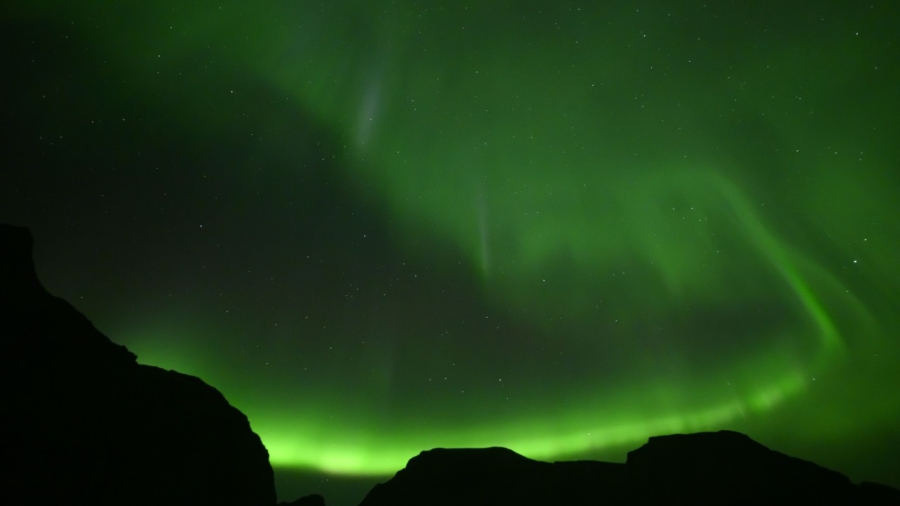The National Oceanic and Atmospheric Administration (NOAA) said Thursday that a “strong geomagnetic storm watch” will stay intact for the remainder of Thursday until Friday after a significant coronal mass ejection (CME) from the sun was observed.
The first portion of the “CME arrived at the NOAA DSCOVR spacecraft, about 1 million miles from Earth” on Wednesday at around 9 p.m. ET, the agency said.
“G1 (Minor) storm levels were reached shortly afterwards,” the statement continued. “Enhanced solar wind conditions continue to show the potential for elevated geomagnetic responses to the G2-G3 levels. Any prolonged or pronounced southward shift in the interplanetary magnetic field (IMF) could quickly escalate geomagnetic reactions to storm levels.”
People in the northern United States could see the aurora borealis, known as the northern lights, on Thursday evening. States where the aurora borealis might be visible include Washington, Idaho, Montana, the Dakotas, Minnesota, Wisconsin, Michigan, New York, Vermont, New Hampshire, and Maine, according to Accuweather.
X1 (R3) strong radio blackout occurred 30/1:37pm EDT from RGN 2975. Initial indications are this flare was associated with a new CME and forecasters are examining data to verify any such CME. See full story at https://t.co/00tjRHJEWf pic.twitter.com/xlRQDw6NEc
— NOAA Space Weather (@NWSSWPC) March 30, 2022
“The chances [of seeing the northern lights in some areas] are going to be really low,” said Taylor Patterson, a meteorologist with the National Weather Service office in Wisconsin, according to the Journal-Sentinel. In Wisconsin, the best time to see them would be at around 3 a.m. or 4 a.m. on Friday, he said.
In Alaska, the northernmost U.S. state, “auroral activity will be high … weather permitting, highly active auroral displays will be visible overhead from Utqiaġvik to King Salmon, and low on the horizon from most of the Aleutians,” said the University of Alaska at Fairbanks in an update Thursday.
Auroras are the result of disturbances in the magnetosphere caused by a geomagnetic storm, which alters charged particles that cause the emission of light of varying color and complexity.
Meanwhile, if the Earth is in the direct path of a CME, these magnetized and charged solar particles interact with the Earth’s magnetic field, producing geomagnetically induced currents that can potentially disrupt communication satellites. Scientists at NASA expect the Sun’s activity to ramp up toward the next predicted maximum in July 2025, meaning more flares, and potentially more aurora sightings, are likely to occur.
Last year, University of California Irvine Assistant Professor Sangeetha Abdu Jyothi warned that a solar “superstorm” pointed at the Earth could trigger an “internet apocalypse” across the entire globe that could last for months.
Katabella Roberts contributed to this report.
From The Epoch Times


